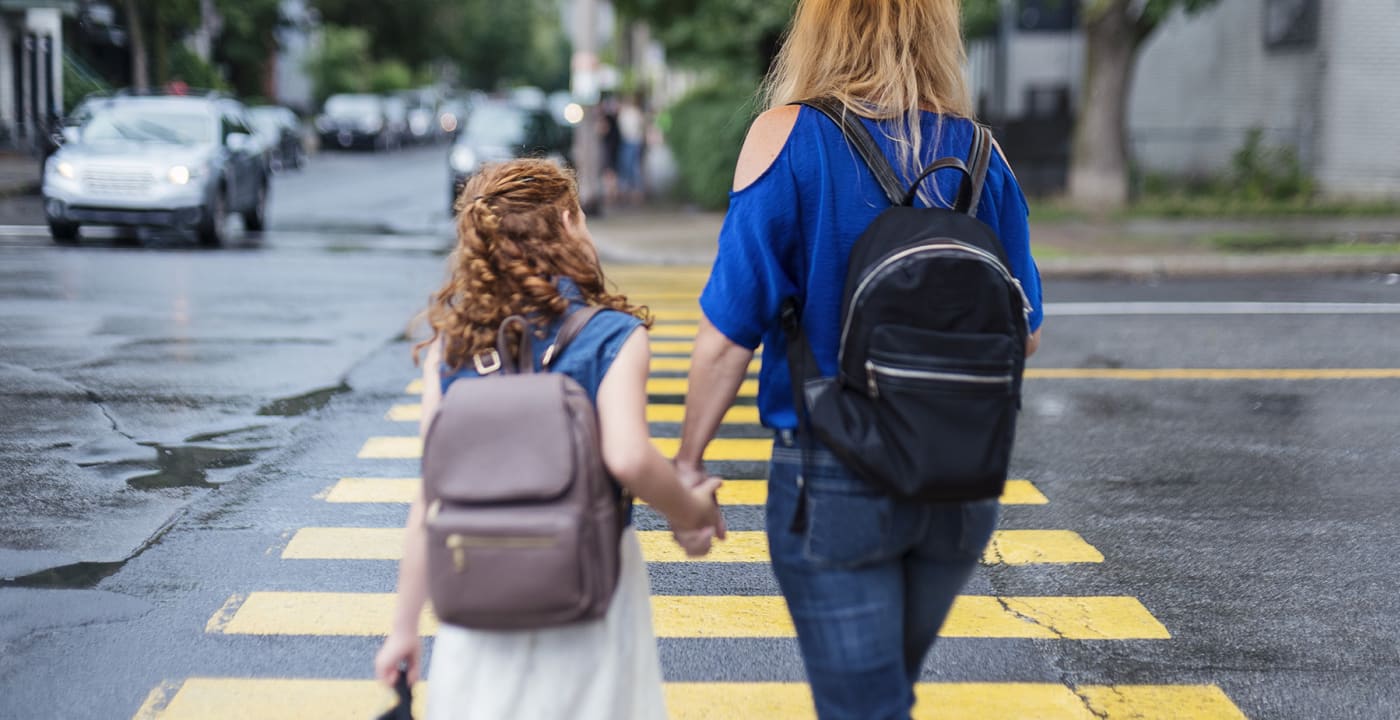Managing return-to-school jitters during the pandemic

As school districts continue to prepare for in-classroom learning, parents and children have begun to discuss how to navigate yet another transition in what has been a frequently changing educational scenario. The thought of returning to school is exciting for many, though some children and parents have expressed worry about return.
MultiCare Mary Bridge Children’s offers this information to help you navigate these fears and support your children.
Not all anxiety about return is related to COVID-19
For children who may be expressing anxiety about returning to school, it is important to consider the source of anxiety. While parents are primarily expressing worry about increased risk of their children contracting COVID-19, children are expressing a range of worries from social, to academic, to separation.
If your child is expressing worries or hesitations about going back to school, encourage them to describe their fears, provide a safe space to listen to worries and then offer your support. Set a matter of fact tone and tell your child you are looking forward to hearing about their day when they return.
Set your child up for success by considering the following:
- Practice without pressure: Before starting school in person, visit the school grounds. Walk about and discuss positive memories and give your child an opportunity to simply be there without the pressure of return. This can do a lot to take the edge off that first day by creating a sense of mastery and familiarity.
- Focus on the positive: Ask about “favorites” such as favorite friends, subject, activity or teacher. Remind your child that school brings a range of experiences and many positive experiences are awaiting them.
- Revisit family “back to school” routines: Our children have gone back to school many times and may find comfort in familiar routines. Consider picking out back-to-school outfits, clearing out and preparing backpacks, and getting special school supplies ready. If you’re not already doing so, begin bedtime and wake up routines to help your child in time for the start of on-site school.
- Practice safety behaviors: Take a walk with a friend, consider allowing your child to escort you to the grocery store, or simply go out for a drive and practice mask wearing, social distancing and frequent hand washing. Children should also hear often that return to school will involve masking, social distancing, frequent hand-washing and other school-based safety precautions which must be followed.
For children with mental health or learning challenges
If your child has mental health or learning challenges which are known to your school, there is much likelihood that your child’s teacher is putting special thought into your child’s return, just as you are. However, if your child has struggled with mental health or learning challenges which are new, consider the following:
- Work with your child’s support network: If your child has a therapist or special educator working with them, involve them in the transition planning process early. They know your child well and will have suggestions. Consider involving your child’s teacher, counselor or school nurse.
- Focus on strengths and coping strategies: Eleven months ago your child struggled with the loss of in-person learning. Remind them that they have successfully weathered that very difficult transition. They will weather the transition back as well. Now is the time to remember any techniques your child might have for relaxation, mindfulness, and focused breathing.
- Take a one-day-at-a-time, flexible approach: Adaptability and flexibility have been critical to our success during this pandemic and will continue to be an essential skill for children and adults. Encourage children to think in terms of small moments, simply trying their best in each. Each new moment brings a fresh start. Perfection is not expected, nor reasonable. Simply “showing up” is worthy of praise and may need to be enough for that first day.
- Have a support plan in place: Anxious children tend to worry often about the “what ifs.” As parents we can decrease this worry by having a support plan in place. Identify your child’s “safe” person at school. Who will he/she go to if feeling overwhelmed? Involve that person in the plan and discuss the first three steps with your child. In this way, predictability will be added to unpredictable moments and will feel within the child’s control. This alone is very helpful in decreasing anxiety.
While the pandemic continues, precautions being put in place and continued mitigation behaviors are having an impact. By following guidelines, communicating and taking one small step at a time, children and families will be ready to navigate their return successfully.
Additional Mental Health resources for kids and teens are available at Kids’ Mental Health Pierce County and MultiCare Behavioral Health.




